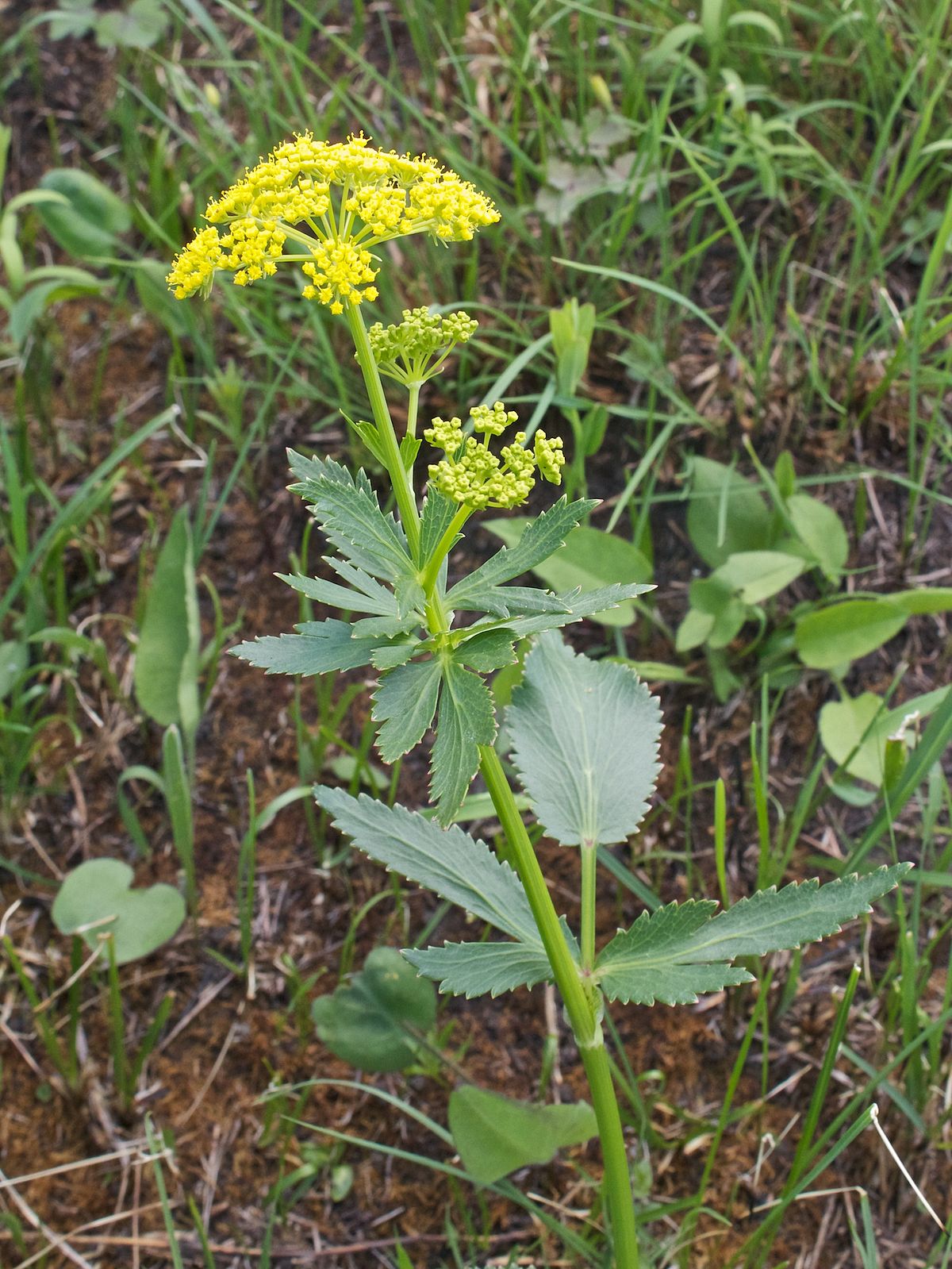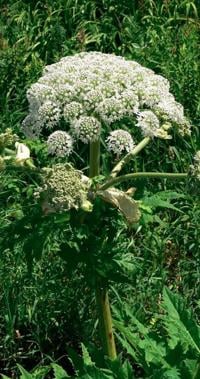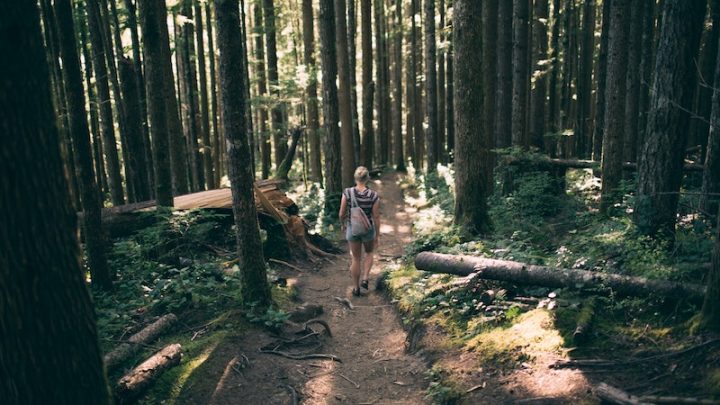Nature is a vital part of what makes Hamilton a unique place to live, visit and explore. The trails and conservation areas within the Hamilton region are accessible year round and offer a variety of active possibilities for any experienced or novice outdoor enthusiast. Below is information regarding local trails that are designed to keep you safe and aware during any season by offering tips and tricks for what to expect on the trails throughout the year. Get out and enjoy what the Hamilton area has to offer!
Expandable List

Lyme disease is on the rise in Canada and, as of 2018, Hamilton is now considered an official risk area.
The result of a bacteria, Borrelia burgdorferi, Lyme disease is transmitted to humans by the bite of infected Black-legged (a.k.a. Deer) Ticks. Although rarely resulting in death, Lyme Disease can have debilitating, and often permanent effects on the life of those who go untreated. According to statistics published by the Government of Canada, 841 cases of Lyme Disease were reported last year in comparison to the 144 reported in 2009. With that being said, learning to recognize the signs and protect yourself against Lyme Disease is an essential skill that everyone, not just outdoor enthusiasts, should know. Enjoying the beauty nature has to offer should never jeopardize your safety. Be aware and stay protected!
Preventing Lyme disease
Lyme Disease is preventable. By being aware, taking the appropriate precautions, and spreading the word, you can protect yourself and those around you from Lyme Disease. Although the best way to avoid contraction is to avoid tick-infested areas, this is not always the most practical plan of action for avid hikers, those with outside employment or individuals enjoying their backyards.
Here are some things you can do to reduce your risk of contracting the infection:
- Avoid tick habitats, which include brushy, overgrown, grassy and woody areas.
- Remove tall grass and brush from work areas.
- Wear light-colored clothing to see ticks more easily.
- Wear long-sleeved shirts and tuck your pants into your boots and socks to make it more difficult for ticks to reach your skin.
- Wear closed-toed shoes or boots when working in grassy or wooded areas.
- Use tick and bug repellent.
- After working outside, check bodily areas where ticks are found. Such areas include: behind the knees, between fingers and toes, armpits, behind ears, on the neck, and in any hairy regions of the body.
- Check your pets.
- Shower well, and wash and dry your clothing at high temperatures after going outside to kill any ticks.
Signs and Symptoms
Lyme Disease is a tick-borne illness where the infection rate of the tick to host is approximately 36-48 hours. The good news is that if the tick is found and removed before this time the likelihood of developing symptoms is greatly decreased. If an infection does occur, the first telling sign is a bulls-eye shaped rash around the initial bite that will develop about a week after the tick bite occurs. However, 20-40% of individuals who contract Lyme Disease will not exhibit this symptom at all. Other early symptoms of Lyme Disease include flu-like symptoms (fever, headache, and fatigue) that can be easily misidentified by healthcare professionals. If untreated, symptoms may include facial paralysis, joint pain, swelling, or severe headaches.
If you suspect that you have been bitten by a tick seek immediate medical attention. Whenever possible, keep the tick to have it tested.
For more information regarding the signs and symptoms of Lyme Disease, please visit CanLyme: Canadian Lyme Disease Foundation.
Tick ID and removal
Tick Identification:
Although Deer Ticks are not the only kind of tick in the forest, they are the only known carriers of Lyme disease.
Identifiers of a Deer Tick include:
- Have a hard black and brown bodies, but appear to be a grey colour when engorged.
- Adults have eight legs; babies only have 6. Deer ticks are also known for their signature black legs.
- Ticks are typically 1-5mm long, but adults can grow up to 20mm when feeding.
Tick Removal with Tweezers:
There are many different methods used to remove a tick. Using tweezers is arguably the safest and most effective way to complete this task; however, removing a tick using any technique is not complicated if done right.
Steps include:
- Locate the head of the tick: If you look closely at the tick, you will see the mouth of the tick attached to the skin.
- Grab the tick as close to the skin as possible with a pair of tweezers: Use sharp, fine-tipped tweezers to ensure you can firmly grasp the tick. Don’t squeeze the body of the tick. Squeezing will cause the tick to inject bacteria into your skin and increase the chances of contracting Lyme disease.
- Pull up and out: Once the tweezers grasp the head of the tick the tick’s mouth will release from the skin. Avoid twisting or jerking the tweezers as you pull in case part of the tick remains attached to the surface and will need to be removed.
- Wash and disinfect the bite: Wash the infected area with warm, soapy water and apply disinfectant to remove any bacteria.
Don’t hesitate to see a doctor if you have trouble removing the tick or if you think you’re at risk of contracting Lyme Disease.
Winter chills shouldn’t keep you from exploring! Here are some tips and tricks on what to expect and how to prepare yourself to play in Winter weather.
Dress like an Onion:
Layers are crucial to hiking in the winter. It is essential to stay warm when participating in winter activities and layering the right clothing is vital to this. Remember, the proper attire should help you stay warm but not cause you to overheat as you exert yourself.
Here is a list of gear to bring when hiking in cold and potentially slippery, snowy conditions:
- Warm hat
- A fleece neck gaiter
- Base layer
- Heavy winter coat
- Warm gloves
- Wool socks
- Winter boots
- Hand or feet warmers: in case of emergencies
- Other options for safety gear include:
- Poles: for stability in slippery conditions
- Crampons: for slippery conditions
Check the Weather:
Winter weather conditions can be unpredictable and can result in obstacles not present during any other time of the year.
This includes:
- Shorter days: During the winter months the sun sits lower in the sky and sets early in the day. Keep in mind that with shorter days, a potentially slower hiking pace and with the weight of added clothing you should plan your hike with more than enough time to get off the trails before it becomes dark. Before heading outside, it is a good idea to look up the sunset time and adjust your plans accordingly.
- Severe weather: The threat of severe winter weather heightens the importance of checking the forecast the day of your hike. Make sure to dress for the projected weather and plan for sudden temperature fluctuations.
Landscape Conditions:
Winter conditions, such as snow can cause several changes and hazards on the trail! Here are a few changes to watch out for that might affect your favorite hiking trail in the winter:
- Ice and Slippery Trail Conditions: As temperatures drop ice accumulation on trails can cause slippery and potentially hazardous hiking conditions that are not present any other time of the year. Be prepared for icy conditions by equipping yourself with the appropriate gear to ensure hiker safety (i.e., using poles, having proper footwear or even bringing along a pair of crampons). As temperatures fluctuate throughout the winter months be sure to monitor weather and trail conditions and come prepared for anything you may face when enjoying the outdoors!
- Snow: Snow cover can make trails slippery and obscure trail information and landmarks. Make sure to bring a map or study trail information before heading out. Another thing to keep in mind is that with snow it is important to be attentive in looking for trail blazes and check trail maps if you are unsure about the direction of a path.
- Fallen Plant Life: Snow can obstruct hiking hazards. It is essential to stay on the trail to avoid potential injury.
Know the Signs of Frostbite:
Anytime your outside in cold temperatures you run the risk of getting frostbite. There are two classifications of frostbite including 1) superficial and 2) deep.
1) Superficial Frostbite
- Experiences of burning, numbness, tingling, itching, or cold sensations in affected areas.
- Affected areas that appear white.
2) Deep Frostbite
- There is an initial decrease in sensations which is eventually lost altogether.
- Swelling and blood-filled blisters.
- White or yellowish skin that has a waxy appearance and turns a purplish blue as it warms up.
- The affected area may feel hard and does not respond to resistance.
Do not hesitate to seek medical attention if you think you have or are at risk of frostbite.
Hypothermia
Hypothermia is a condition that refers to the cooling of the internal parts of the body. Although Hypothermia can occur any time of the year, it is most prevalent during the winter months. Contributing factors include:
- Coldness
- Becoming wet: through rain, swimming, falling into a body of water or excessive perspiration.
- Cool wind
Symptoms include:
- Uncontrollable shivering
- Difficulty speaking
- Dazed appearance
- Lack of coordination
- Slow pace (stumbling or falling)
Treatment includes:
- Preventing further heat-loss
If symptoms persist, seek immediate medical help.
This information was adapted from The Bruce Trail Reference Trail Guides and Maps.
Hot and sunny, as it should be, the trails during this time of year are bustling with delightful folk enjoying the great outdoors. Here are some tips and tricks on what to expect and how to prepare yourself to play in the Summer weather.
Cover Up
Summer is the hottest time of the year. With that in mind, the more skin you can shield from the hot sun, the happier you will be when out on your favorite trail. Don’t forget the summer hiking essentials!
This includes:
- A hat with a visor or a large brim: Wearing a hat in the summer is a great way to protect your hair, eyes, and skin from UV-rays. In addition to sunscreen and UV-blocking sunscreen, wearing a hat can offer added coverage to your face, ears, and neck.
- UV-blocking sunglasses: Eye protection is a good idea any time of the year. However, exposure to UV rays becomes the greatest during the summer months. This vulnerability is due to prolonged daylight hours where the sun is out longer and at its highest in the sky.
- Also, take into consideration the effect of UV rays when hiking through altitude changes; the air is cleaner and thinner at high altitudes which means that UV exposure is more significant when climbing a mountain than when walking in a valley.
- Remember: the more sun exposure you get, the more UV rays will affect you. You are exposed to UV rays in all outdoor situations including picnics, mowing the lawn, long drives, sporting events and more!
- Loose fitted clothing: When participating in any summer outdoor activity it is beneficial to trade in tight-fitting or restrictive clothing for something free and comfortable. Style should never come to safety or comfort!
- Try to avoid cotton clothing, instead opt for either wool or wicking fabrics.
- Prepare for sudden changes in weather by bringing extra layers or a rain jacket. Don’t forget to check the weather before heading out and monitor weather conditions for any changes.
- Sunscreen and bug repellent: Sunscreen is a good idea any time of the year. However, it is an essential part of participating in summer activities where you are at a higher risk of experiencing sun-related skin damage. Bug repellent is also necessary to consider in the summer to avoid getting bit by an increased amount of pests, like mosquitos. One time application doesn’t do the trick, make sure to apply sunscreen and bug repellent often throughout the day!
Hydrate
Your body loses a lot of water when hiking in hot weather so make sure to stay hydrated to avoid dehydration and other related conditions.
- Levels of exertion: The harder you are working, the more water your body is loosing through respiration and perspiration. In such cases, to avoid dehydration, you need to be adequately replacing the fluids your body has lost.
- Don’t wait until you’re thirsty: By the time you become thirsty, you are already at risk of dehydration. It is best to continue drinking water as you hike!
- Can I drink too much?: Yes, you can! This condition is known as “hyponatremia” and refers to the experience of having abnormally low sodium levels in the blood. Hyponatremia is most likely to occur when hiking in cases where to much water is drunk without replacing electrolytes lost through respiration and perspiration. To combat “hyponatremia,” it is essential to bring along salty snacks (i.e., a sports drink, electrolyte powder or snacks like peanuts or pretzels).
Know the Signs of Heat Stroke
Anytime your body gets too hot you run the risk of suffering from heatstroke. The most common signs of heatstroke include:
- A throbbing headache
- Dizziness
- Muscle cramps
- Nausea
- Disorientation or confusion
- Lack of sweating (despite the hot temperature)
Start Early and Take Lots of Breaks
To avoid the hottest part of the day, try getting out on the trail as early as possible to take advantage of the cooler morning temperatures. However, in the event of warm temperatures or afternoon hikes remember to take many breaks and find shaded stops to relax in.
-
Wild Parsnip

It can be up to 5 feet tall. Both the stems and the leaves have hairs. The leaves of the wild parsnip have sharp teeth. Additionally, it features clusters of yellow blooms with an umbrella form. As the plant likes sunlight and will grow anywhere near the sun, although they are not opposed to the shadow, it is most commonly found in fields, trails, forests, and waste places.
IMPORTANT
Considering the plant itself is so hazardous, refrain from touching it. The toxic compound furanocoumarin can cause dermatitis if it comes in touch with the skin’s surface and is present in the stem, leaves, and flowers.
-
Poison Ivy

Poison-ivy grows both in deep woods and in the open; in dry, sandy areas, crevices of rocks, or swamps; along the borders of woods, fencerows, or roadsides. Poison ivy has woody stems. It may grow as a shrubby plant only a few centimetres high carpeting the ground, or it can grow upright, reaching up to 3 ft tall. It can also grow as a vine and twine around trees and shrubs. When attached to other plants, it does not damage the living plant on which it grows. The young unfolding leaflets are reddish or bronzy green in spring and early summer. They can also develop flowers in small round hard berries. After the leaves have dropped in the fall, the clusters of grayish-to-white, waxy-looking berries can easily identify poison ivy. Poison-ivy is spread by seed, but it also has extensive underground stems from which new plants develop.
IMPORTANT
People sensitive to poison ivy experience an unpleasant skin rash. Oil in the plant’s root, stem, leaves, flowers, and fruit is harmful. Any torn or bruised area releases oil that may contact the exposed bodily parts directly or through handling contaminated objects.
Poison ivy oils can also be transferred to humans by pets who have been in contact with it.
-
Giant Hogweed

Giant Hogweed has large, spiky leaves and white flowers blooming in umbels, which don’t blossom for at least two years after the plant is established. It will only flower once before dying. It can grow up to 16 feet tall. The stem has noticeable purple spots and coarse hairs.
IMPORTANT
Do not touch or wash it off with antibacterial soap once you come in close contact with it. Both people and animals should avoid contact with the plant’s sap. It can result in severe burns if it touches your skin if the region is subsequently exposed to sunlight. These burns can be severe enough to lead to permanent scars. There is a possibility of blindness if exposed to the eyes. It is easily spread by wind, making it a challenge to remove.
-
Stinging Nettle

Although it can sting, many people harvest stinging nettle due to their medicinal properties such as anti- bacterial properties and as immune booster. It is rich in vitamin C and A.
IMPORTANT
Do not harvest on McMaster Forest territory. Kindly do not touch or try to avoid touching the plant, as it can cause pain that can last through the whole day. Short, hollow hairs positioned like tiny needles that penetrate the skin cover the entire plant. The same formic acid that makes bee and ant stings hurt is present in their swelling bases.

